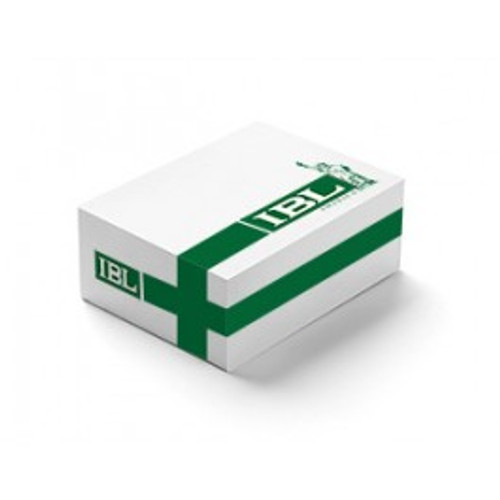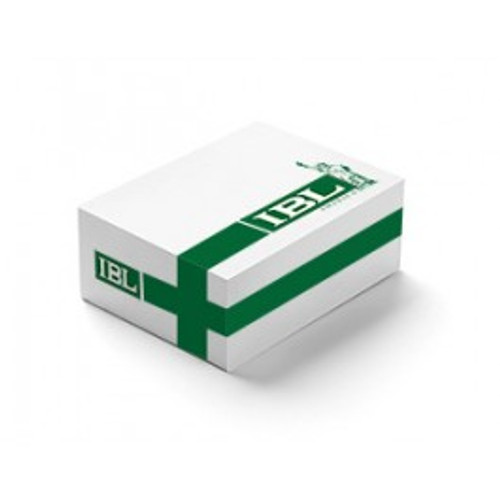Radioimmunoassay (RIA) for the quantitative measurement of levels of IGF-I in serum or plasma. Human IGF-I measurements are used in the diagnosis and treatment of growth disorders involving the anterior lobe of the pituitary gland.<br><br>
Insulin-like growth factors (IGF) I and II play a pivotal role in regulating the proliferation, differentiation and specific functions of many cell types (1-3). IGF-I is identical with Somatomedin C (Sm-C) (4) and has a molecular weight of 7649 daltons (5). Its major regulators are growth hormone (GH) and nutrition (6), although its production in specific tissues is affected by a multitude of tropic hormones and other peptide growth factors. In contrast to many other peptide hormones, IGFs are avidly bound to specific binding proteins (IGFBP). The seven classes of IGFBPs which are known at present (7,8,22) either bind IGF-I and IGF-II with similar affinities or show a preference for IGF-II (9,10).<br><br>
A major problem of IGF-I measurement results from the interference of IGFBPs in the assay. Direct determinations in untreated serum samples (11) give false values because of the extremely slow dissociation of the IGF-I/IGFBP-3 complexes during the assay incubation. Depending on the ratio IGF-I to IGFBP the following errors may occur:<br><br>
- in samples with low IGF-I concentration, IGFBP-complexation will take place predominantly with the IGF-I tracer, thus leading to false-high results in a competitive RIA. Effect: Overestimation of low IGF-I levels.<br><br>
- in samples with high IGF-I concentration, unmarked IGF-I from the sample will be predominantly complexed by IGFBPs and therefore withdrawn from measurement. Effect: Underestimation of high IGF-I levels.<br><br>
Therefore, various techniques were applied to physically separate IGF-I from its binding proteins before measurement, including (a) size exclusion chromatography under acidic conditions, (b) solid-phase extraction and (c) acid-ethanol extraction (2,12,13). These techniques, however, are either inconvenient or time-consuming or give incomplete and not-reproducible recoveries. The most widely used method is the acid-ethanol extraction (13,14) with a recovery of only 70-80 % of IGFBP-bound IGF-I as a result of co-precipitation. The absolute results of such an extraction are therefore false low (15). The extraction removes the IGFBPs only insufficiently and leads to reduction in sensitivity of the assay due to pre-dilution of the samples by the extraction procedure.<br><br>
Furthermore, the remaining IGFBP may still interfere in the assay. In addition, the acid-ethanol extraction is ineffective in specimens other than serum or plasma (e.g. cell culture media), in which determination of IGF-I is already difficult enough due to the fact that IGFBPs are frequently present at large excess. To avoid these difficulties, an uncomplicated assay was developed, in which special sample preparation is not required before measurement. For research use only, not for use in diagnostic procedures.
- Assay Description:
- 4 hours (RT) total incubation time
- Catalog number:
- R22
- configuration:
- Reagents and tubes for 100 determinations
- controls:
- 2 controls, lyophilized
- design:
- Radioimmunoassay (RIA) technique
- FDA Status:
- For research use only, not for use in diagnostic procedures
- MSDS:
- notes:
- The protocol for this product (see above) is intended to serve as an example only. Please refer to the Instructions For Use provided with the assay kit for precise details.
- Other names:
- Insulin-like Growth Factor-1, IGF-1
- Protocol:
- Sample types:
- Serum or plasma
- Sample volume:
- 100 µL of properly diluted unknown / determination
- standards:
- 5 standards, ready to use
- Standard range:
- 0.37 - 30.00 ng/mL
- storage:
- 2 - 8 °C
- sensitivity:
- 0.107 ng/mL
- Species:
- Human
- Additional info:
- radioactivity:
- <1.5 μCi (<55 kBq)







